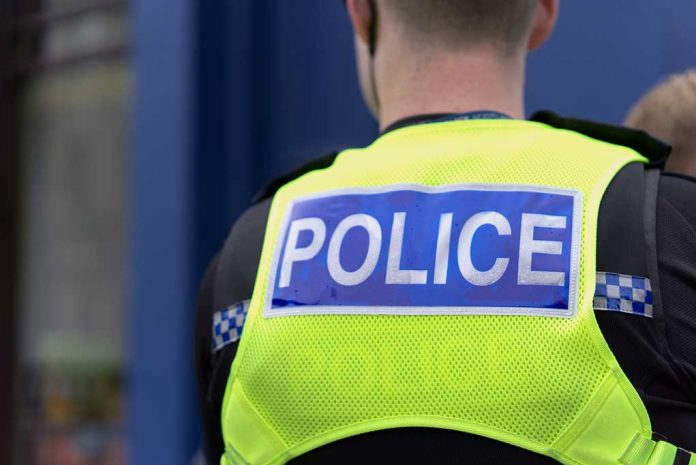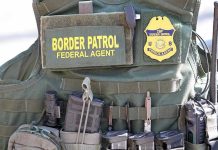
President Trump’s executive order to equip local police with military-grade hardware has sparked fears of domestic militarization, raising questions about the balance between public safety and civil liberties.
Key Takeaways
- President Trump signed the executive order “Strengthening and Unleashing America’s Law Enforcement”, directing increased military equipment transfers to local police within 90 days.
- Attorney General Pam Bondi and Defense Secretary Pete Hegseth are tasked with implementing the order, consulting with Homeland Security Secretary Kristi Noem.
- Equipment likely includes armored vehicles, tactical gear, and advanced surveillance technology previously restricted from local departments.
- Critics fear the militarization could erode public trust, escalate police-citizen encounters, and blur the line between military and law enforcement roles.
- The order comes amid broader expansions of federal authority, including considerations of invoking the Insurrection Act at the southern border.
The Executive Order’s Scope and Implementation
The directive, officially titled “Strengthening and Unleashing America’s Law Enforcement to Pursue Criminals and Protect Innocent Citizens,” establishes a 90-day deadline for determining how military assets can be deployed to combat crime at the local level. Though specific equipment types remain unspecified in the order, previous similar programs have included the transfer of armored vehicles, tactical equipment, and surveillance technology to local police departments across the nation. The Department of Justice and Department of Defense are expected to develop the expanded transfer program by July 27, 2025, including details on equipment types, eligibility criteria, and oversight measures.
This executive action represents a significant reversal of policies that had previously limited such transfers due to concerns about excessive militarization of civilian law enforcement. The implementation team includes Attorney General Pam Bondi and Secretary of Defense Pete Hegseth, who will work in consultation with Secretary of Homeland Security Kristi Noem. Their collective task involves establishing protocols for equipment distribution and determining appropriate use guidelines within American communities.
DONALD TRUMP'S NEW ORDER SPARKS 'MARTIAL LAW' CONCERNS (Newsweek)
The "Strengthening and Unleashing America's Law Enforcement to Pursue Criminals and Protect Innocent Citizens" executive order, which the president signed on Monday, directs Attorney General Pam Bondi and… pic.twitter.com/blS4UgnAjt
— FXHedge (@Fxhedgers) April 30, 2025
Concerns About Civil Liberties and Public Trust
The executive order has generated significant debate about potential implications for civil liberties and community relations. Civil liberties groups have raised alarms about how military-grade equipment might affect everyday police interactions and constitutional protections. The Posse Comitatus Act of 1878 traditionally limits military involvement in domestic law enforcement, creating a clear separation between military and police functions. Critics worry this new directive may gradually erode that distinction, potentially changing the character of community policing.
Law enforcement advocates counter that enhanced equipment provides necessary protection for officers operating in increasingly dangerous situations. They argue these tools can help save lives during high-risk operations and provide capabilities needed to address sophisticated criminal threats. The debate centers on whether such equipment leads to more aggressive policing tactics or simply better equips officers to handle the most dangerous situations they might encounter.
Broader Context of Federal Authority Expansion
This executive order appears within a broader pattern of expanded presidential authority under the Trump administration. On his first day back in office, President Trump declared a national emergency at the southern border and directed officials to evaluate potential use of the Insurrection Act of 1807 in response to immigration concerns. The Insurrection Act allows presidents to deploy active-duty military for domestic law enforcement in certain circumstances, including when it becomes “impracticable to enforce” laws through normal judicial proceedings.
The Act has historical precedent, having been invoked during the Civil War, against the Ku Klux Klan, for school desegregation enforcement, and during the 1992 Los Angeles riots. Defense Secretary Pete Hegseth and Homeland Security chief Kristi Noem have been tasked with assessing the current border situation and will announce recommendations regarding potential military deployment in the coming days. Legal challenges may arise if the administration proceeds with invoking the Insurrection Act, particularly given border crossings currently stand at a 25-year low.
Sources:
Could Trump invoke another rarely-used law at the border?
Donald Trump’s New Order Sparks ‘Martial Law’ Concerns













